|
|
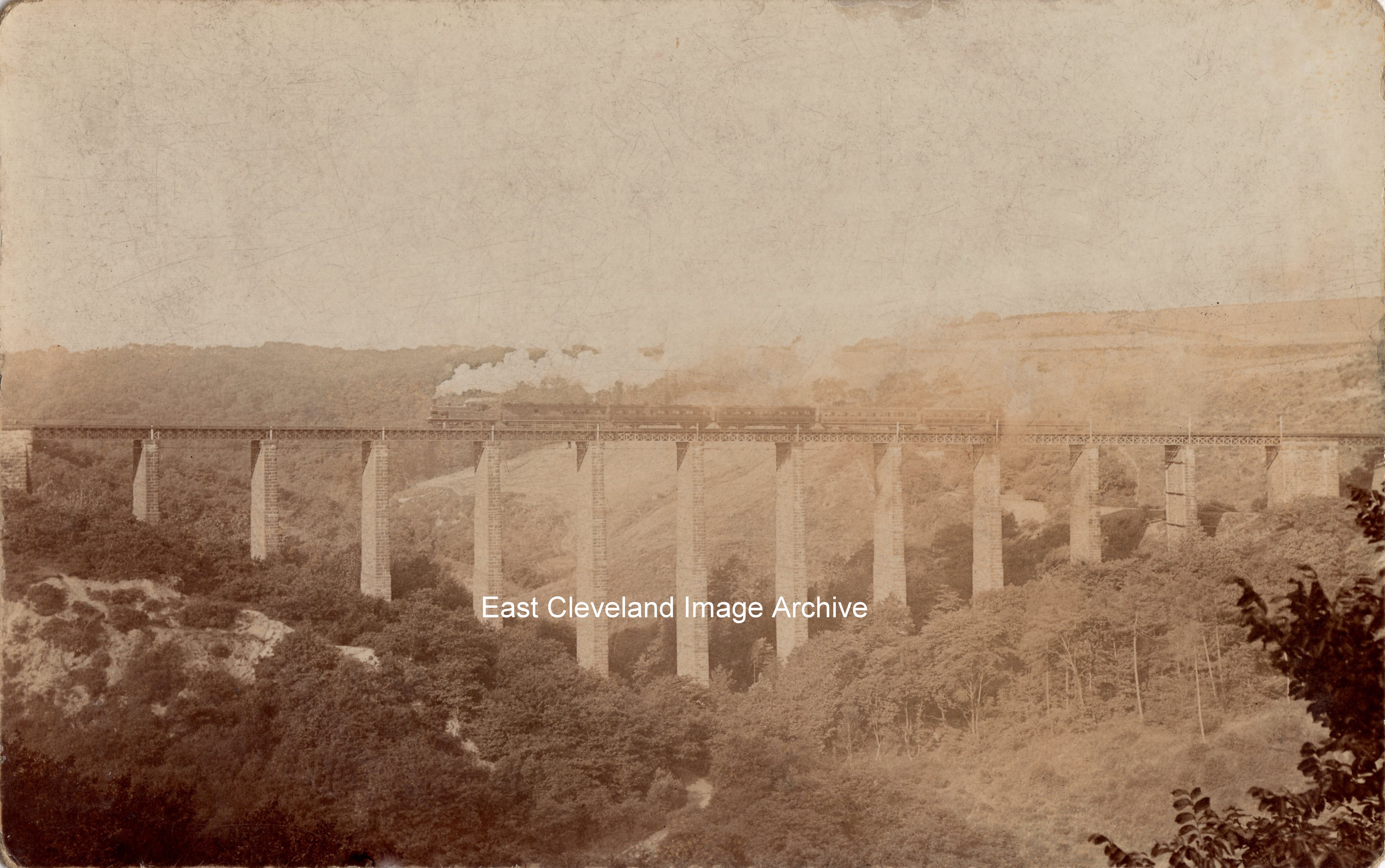
This Kilton Valley Viaduct view comes from an undated and unused postcard, possibly previous to 1905 and the in-filling between the supporting arches. It is possible that the locomotive will give a possible dating and the Archive would welcome any assistance. Geoffrey Allen has responded to our request with:”The locomotive appears to be a N.E.R Class O 0-4-4T (LNER/BR Class G5) it is in Lined NER Livery. These engines were built at Darlington Works between May 1894 and December 1901; 110 in total so a 1905 date is possible. They were used on the Saltburn to Scarborough service and the number of coaches may suggest that this is such a train. Of the six coaches the second to last appears to be an earlier 6 wheel coach, the last of which were built about 1897 all the rest are bogie coaches, the first is a birdcage brake coach and the last may also be the same but the details are obscured. The other 3 appear to be low roofed bogie coaches built from about 1895 to 1906.”
Image courtesy of Julie Tyrka; thanks to Maurice Dower for the update and many thanks to Geoffrey Allen for the excellent update.
This postcard view of the Loftus Viaduct is one of a series of cards (all bearing the Loftus coat of arms), we have no idea of date as all are unused. Derick Pearson reminds us that the viaduct was filled in in 1913 and that the works cooler building and chimney were in-situ before 1905. We believe this dates from the period 1895 to 1905. But we await verification on this date.
Image courtesy of Olive Bennett, many thanks to Derick Pearson for the advice.
Another hand-tinted picture postcard, and although of unknown production one of the copies viewed is clearly postmarked 1902. Not so much the castle but the ruins of what must have been a beautiful castle. Today it is difficult to find in the undergrowth with brambles and nettles covering what remains, whilst the whole site is shrouded by trees.
Image courtesy of Kim Whaley and John G Hannah.
Near Loftus viaduct is the caption and a long time ago by the look of the clothes worn by the boys; can you date it?
Image courtesy of Pat Bennison and the Pem Holliday Collection.
A lovely picture of the walls of Kilton Castle, believed to have been taken in the late 1970’s. Was that when Leeds University used to come in the summer to excavate there? I wish I could have seen it in all its glory.
Image courtesy of Ray Brown.
This lovely photograph shows the castle wall from the other side. Were these just a lookout post or were they there to shoot the arrows through? Julie Riddiough thought they might be linked to a chapel: “Looks like a cross to me.” Susan advised: “It is a crossbow loop, for defending the castle.”
Image courtesy of Ray Brown, thanks to Julie Riddiough and Susan for the updates.
I don’t think you could see it like this now as it is so over grown all around it, but a lovely photograph.
Image courtesy of Cleveland Ironstone Mining Museum.
Once the impregnable stronghold of the De Thweng’s, Kilton Castle fell into disrepair and by 1347 had only one occupant – Catherine de Thweng, a widow – and later in the same century, it was described as being totally abandoned. Even less of Kilton castle exists today, despite its Ancient Monument status. Peter Appleton provided information regarding the de Thweng’s: “In 1272, Peter de Brus III died without male heir. His four sisters became co-heiresses of the de Brus estates in north-east Yorkshire. Lucia de Brus married Marmaduke de Thweng and had, as her portion of the estates, the manors of Yarm, Danby and Brotton. The latter included the township of Kilton. Her older sibling, Agnes, received the manors of Skelton, Marske, Upleatham and Kirkleatham, whilst her younger siblings, Margaret and Laderina, received respectively, the barony of Kendal and the manor of Carlton-in-Cleveland.”
Image (courtesy of John G. Hannah) from “Views of Loftus-in-Cleveland and Neighbourhood” published by J. F. Cooke. Apologies for incorrectly quoting Lucy de Thweng. Thanks to Peter Appleton for the update regarding the de Thweng’s.
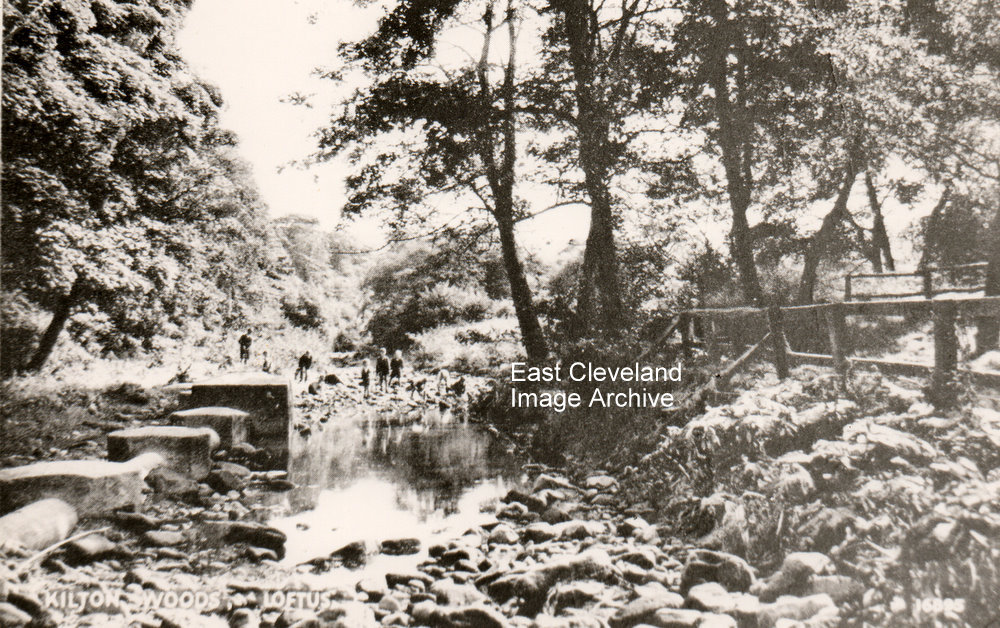
Kilton woods on one side of the valley and Whitecliffe woods and Glover’s Path on the other side with the beck running between. The children seem to be having a great time in the beck
An idyllic rural image, just to show that the Loftus area wasn’t all Ironstone Pits and Smelters – well most of it was!
Image courtesy of the Pem Holliday Collection; taken from ”Cooke’s Views of Loftus and District” an album of views around Loftus produced by Cooke’s Fancy Bazaar of West Road, Loftus.
|
|

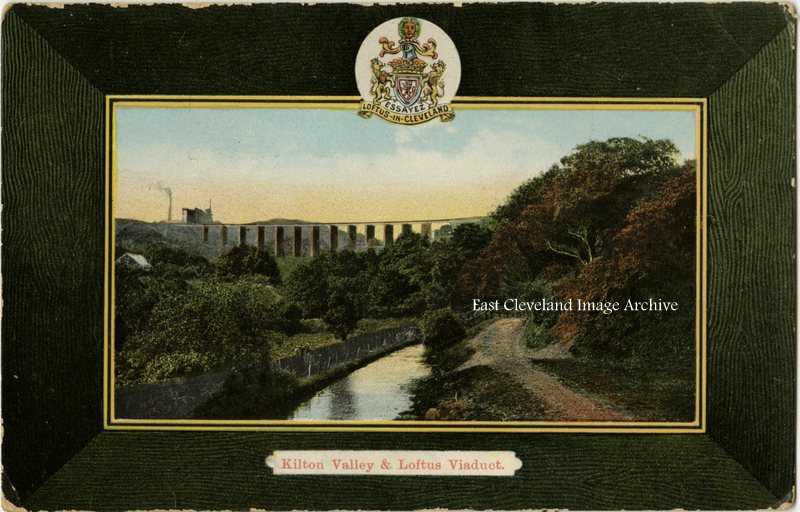
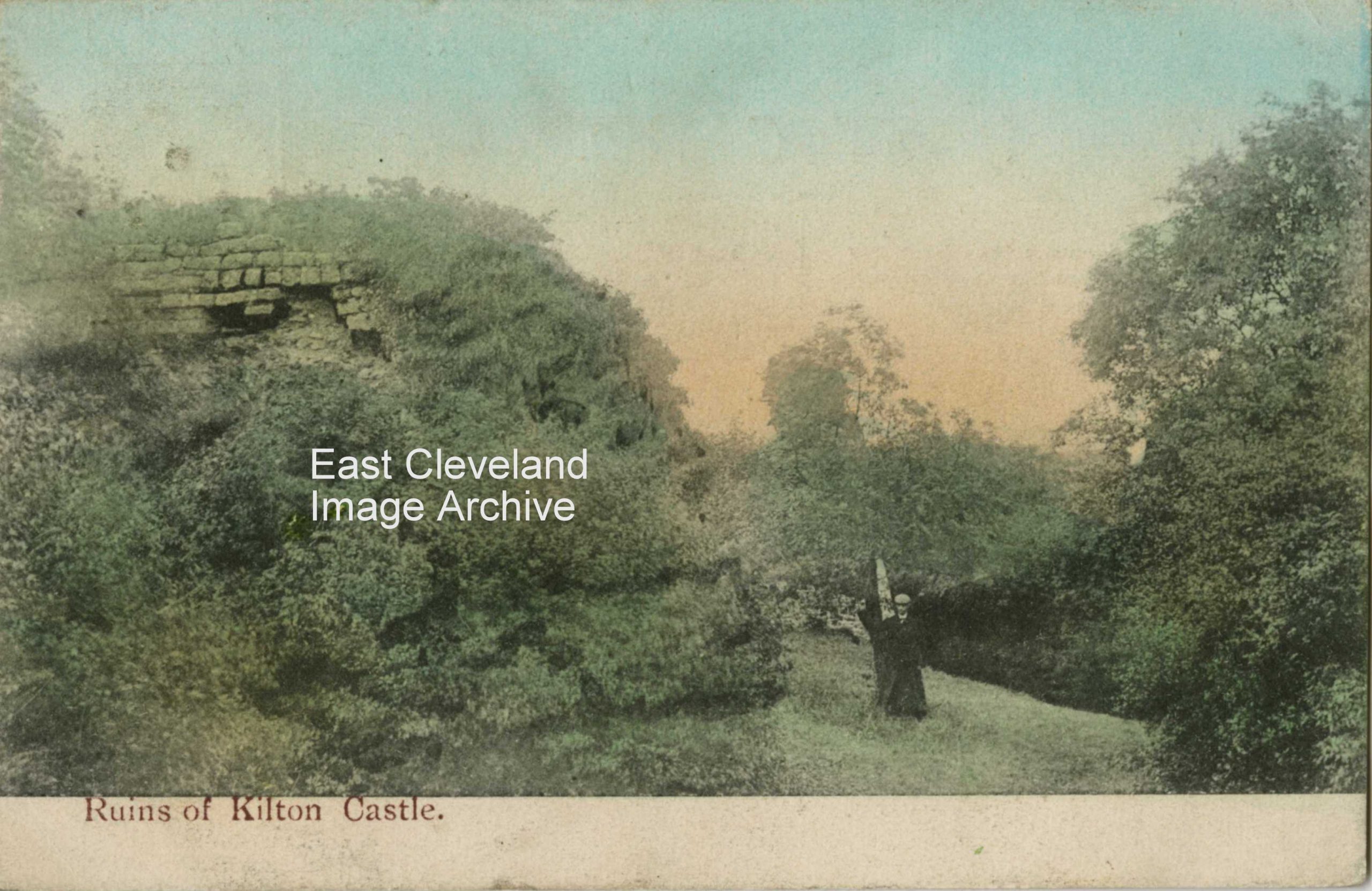
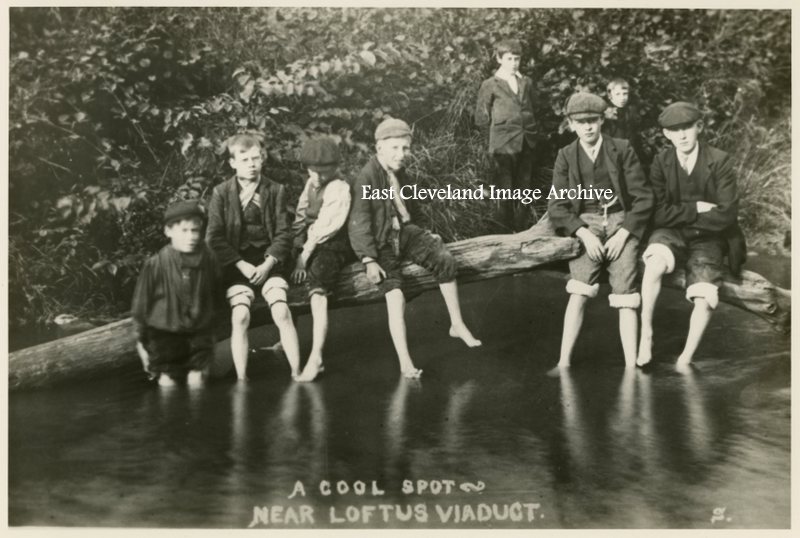
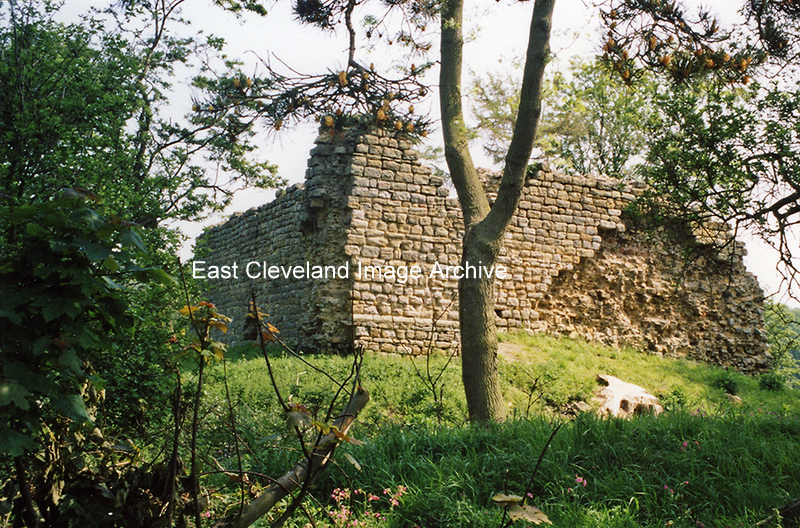
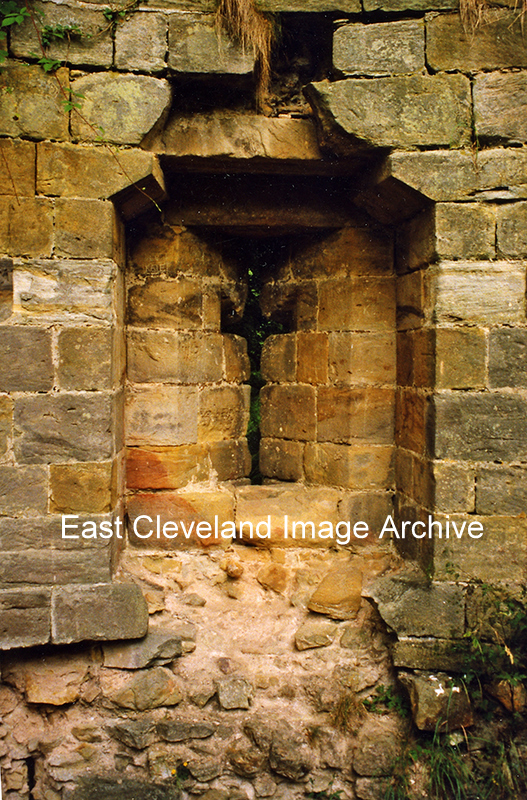
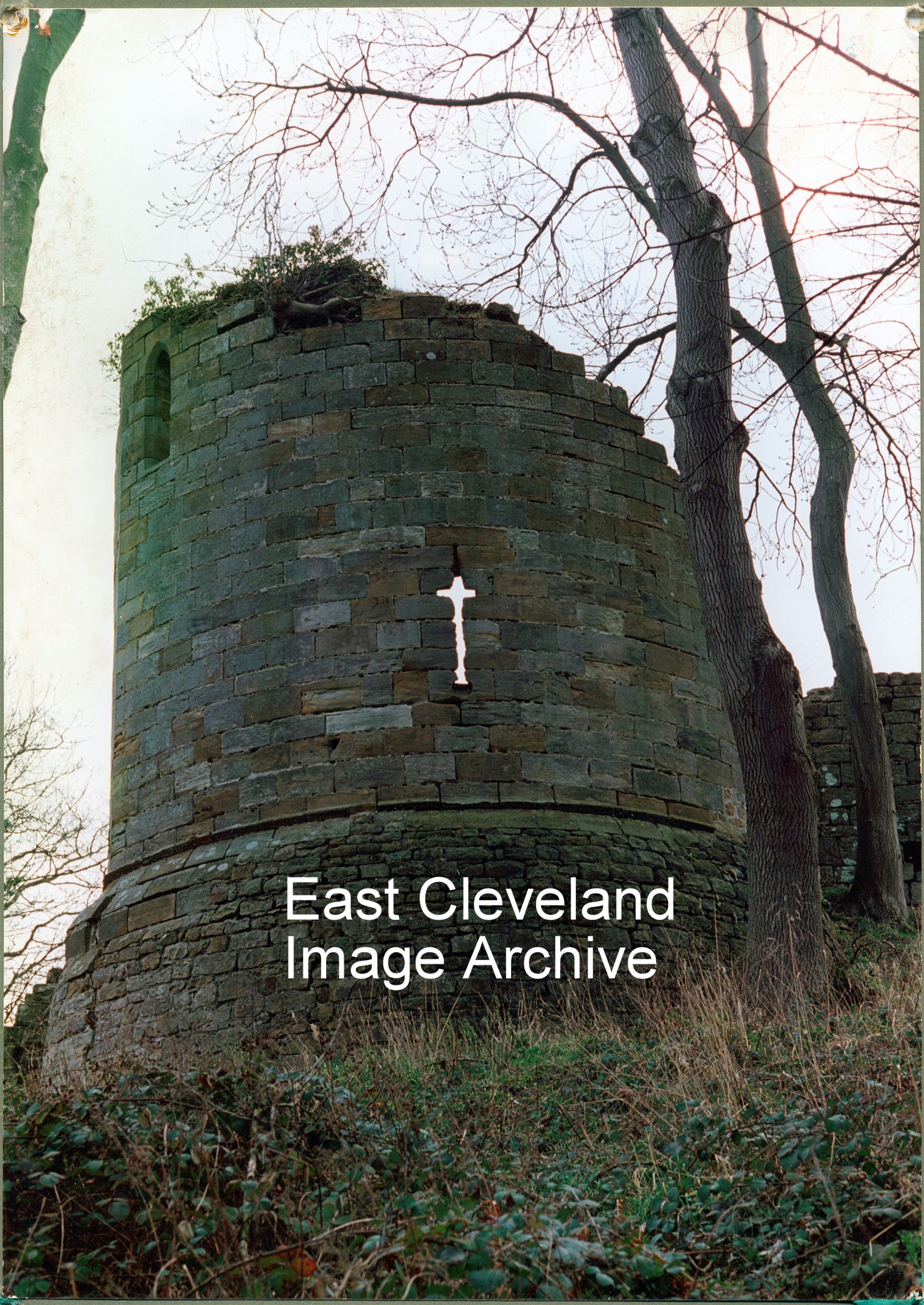
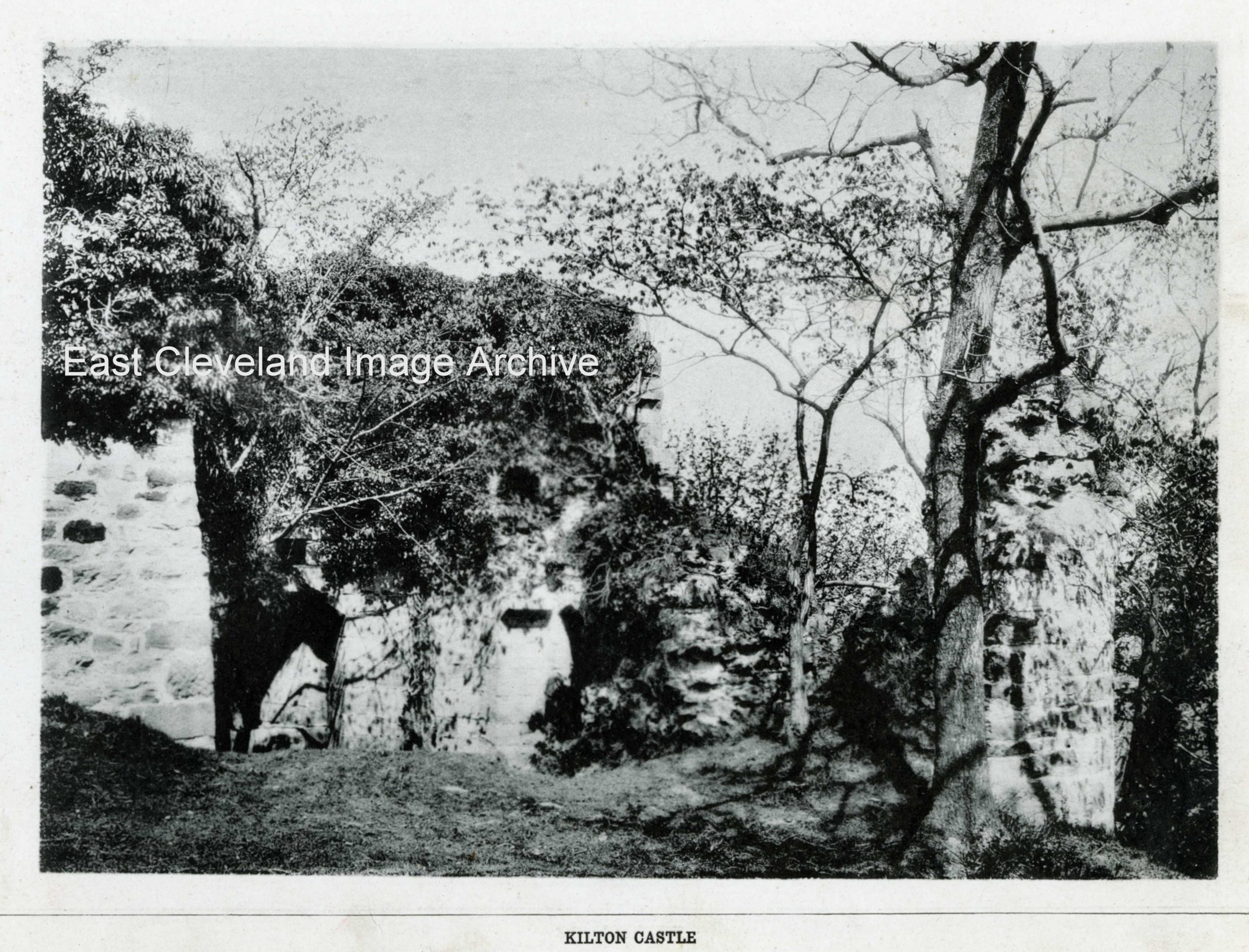

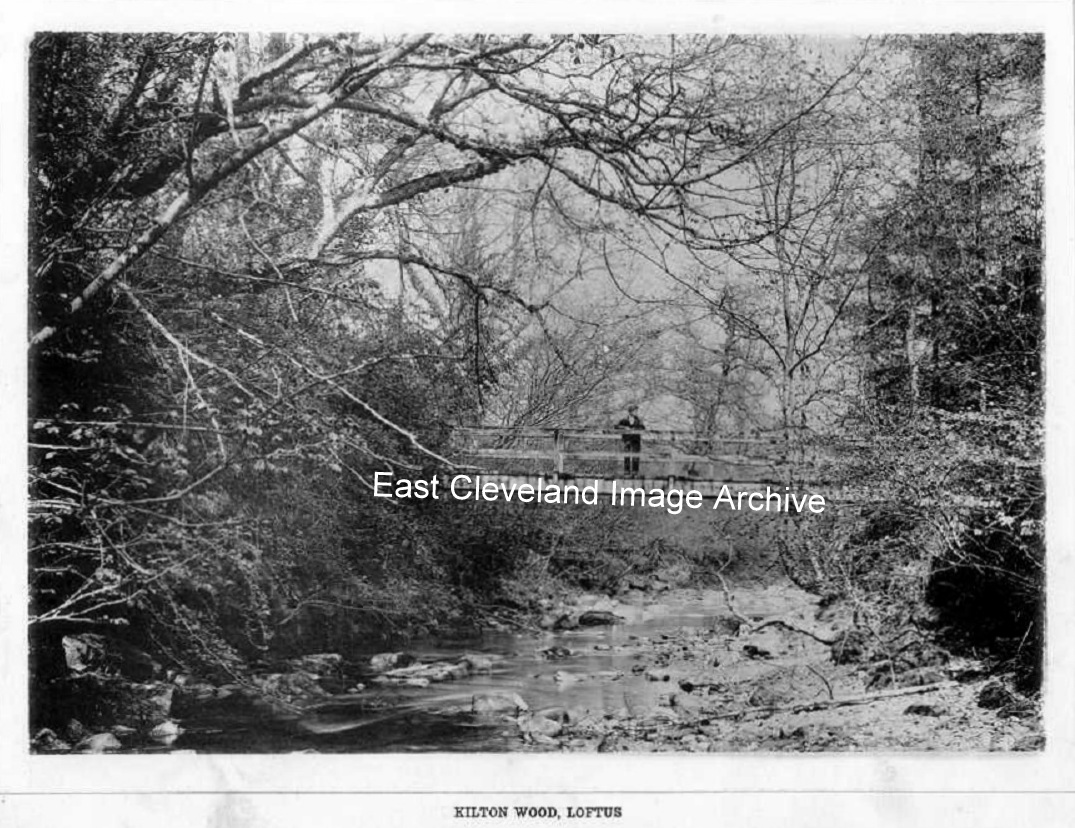
Recent Comments